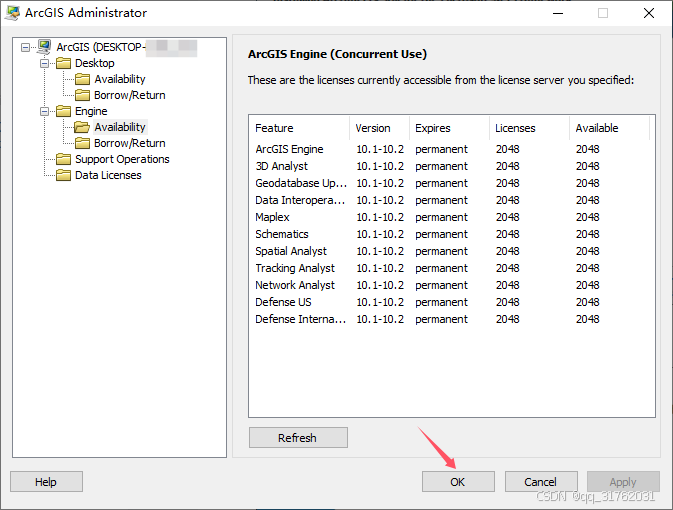目录
简介
字节输入流
获取字节输入流
读
关闭输入流
字节输出流
获取字节输出流
写
换行符
刷新
关闭输出流
字符流输入流
获取字符输入流
读
关闭输入流
字符输出流
获取字符输出流
写
换行符
刷新
关闭输出流
简介
IO流分为两大派系:
1.字节流:字节流又分为字节输入流、字节输出流
2.字符流:字符流由分为字符输入流、字符输出流
什么叫输入流?
我们可以认为,把文件内容拿到java代码中,文件的内容输入到了java代码内,这种被称为输入流。
什么叫输出流?
我们可以认为,把java代码内输入的一些内容,保存到java代码外的文件中,这种被称为输入流。

字节输入流
获取字节输入流
FileInputStream fileInputStream = new FileInputStream(String str,);
str:文件的地址路径。
// 案例
FileInputStream fileInputStream = new FileInputStream("../io-demo/abc/2.txt");读
方案一:
int len = fileInputStream.read(byte[] b);
根据数组大小读取文件内容。
len:当前读取字节的个数。
b:byte数组,每次读几个字节取决于定义的byte数组,读取到的内容后,会放入定义好的byte数组(不设置默认读1个字节)。
案例:按照数组大小读取内容
package com.zsh;
import java.io.FileInputStream;
import java.io.IOException;
/**
* IO字节输入流
*/
public class IoInputStream {
public static void main(String[] args) {
try (
// 创建文件字节输入流管道,与源文件接通。
FileInputStream fileInputStream = new FileInputStream("../io-demo/abc/2.txt")
) {
// 定义byte数组,设置一次读取多少个字节(当前每次从文件中读取3个字节出来)
byte[] buf = new byte[3];
// 定义变量,接收当前读取内容的长度 .read()没有数据返回-1
int len;
// 循环读取文件中的所有内容
while ((len = fileInputStream.read(buf)) != -1){
// 读取到的内容会被放到前面定义好的byte数组中
System.out.println(new String(buf));
}
} catch (IOException e) {
throw new RuntimeException(e);
}
}
}
方案二:
byte[] bytes = fileInputStream.readAllBytes();
读取全部内容。
.readAllBytes();在jdk1.8以后才有。
一次性读取文件中全部的内容,如果文件内存过大会导致内存溢出,不建议使用!!!
案例: 一次性读取全部内容
package com.zsh;
import java.io.FileInputStream;
import java.io.IOException;
/**
* IO字节输入流
*/
public class IoInputStream {
public static void main(String[] args) {
try (
// 创建文件字节输入流管道,与源文件接通。
FileInputStream fileInputStream = new FileInputStream("../io-demo/abc/2.txt")
) {
// 一次性读取全部内容
byte[] bytes = fileInputStream.readAllBytes();
System.out.println(new String(bytes));
} catch (IOException e) {
throw new RuntimeException(e);
}
}
}
关闭输入流
方案一:
fileInputStream.close();
手动关闭输入流。
// 案例
// 定义FileInputStream对象
FileInputStream fileInputStream = null;
// 创建文件字节输入流管道,与源文件接通。
try {
fileInputStream = new FileInputStream("../io-demo/abc/2.txt");
} catch (FileNotFoundException e) {
System.out.println("找不到文件");
} finally {
if(fileInputStream != null){
try {
// 关闭字节输入流
fileInputStream.close();
} catch (IOException e) {
System.out.println("文件读取异常");
}
}
}
方案二:
把FileInputStream fileInputStream = new FileInputStream("../io-demo/abc/2.txt");放到try-with-resources中可以不用手动关闭流。
选中FileInputStream fileInputStream = new FileInputStream(String str);按crtl + alt + t,选择try-with-resources即可。
只要是继承了AutoCloseable接口的类,就可以放到try的()中,不用手动.close();
只需要在catch中处理异常即可。
// 案例
try (
// 创建文件字节输入流管道,与源文件接通。
FileInputStream fileInputStream = new FileInputStream("../io-demo/abc/2.txt");
) {
// 这里正常写代码逻辑
} catch (IOException e) {
System.out.println("文件读取异常");
}字节输出流
获取字节输出流
FileOutputStream fileOutputStream= new FileOutputStream(String str,boolean append);
如果文件不存在则会创建文件。
str:文件输出的地址路径,要保存到哪。
append:可以设置为true,默认是false,设置为true以后,文件写入不会顶替掉之前的内容,而是继续追加内容。
// 案例
// 创建文件
FileOutputStream fileOutputStream = new FileOutputStream("../io-demo/abc/2.txt");
// 不覆盖文件内的内容,继续向文件中追加内容
FileOutputStream fileOutputStream = new FileOutputStream("../io-demo/abc/2.txt",true);写
方案一:
fileOutputStream.write(int i);
写入单个字节。
i:要写入的内容
案例: 写入单个字节
package com.zsh;
import java.io.FileOutputStream;
import java.io.IOException;
/**
* IO字节输出流
*/
public class IoOutStream {
public static void main(String[] args) {
try (
// 获取字节输出流
FileOutputStream fileOutputStream = new FileOutputStream("../io-demo/abc/3.txt", true);
) {
// 写入单个字节
fileOutputStream.write(97);
fileOutputStream.write(98);
} catch (IOException e) {
throw new RuntimeException(e);
}
}
}
方案二:
fileOutputStream.write(byte[] b);
byte数组写入文件。
b:要写入的字节数组。
案例:byte数组写入文件
package com.zsh;
import java.io.FileOutputStream;
import java.io.IOException;
/**
* IO字节输出流
*/
public class IoOutStream {
public static void main(String[] args) {
try (
// 获取字节输出流
FileOutputStream fileOutputStream = new FileOutputStream("../io-demo/abc/3.txt", true);
) {
// byte写入文件
byte[] bytes = new byte[]{66,67,68,69,70};
fileOutputStream.write(bytes);
} catch (IOException e) {
throw new RuntimeException(e);
}
}
}
方案三:
fileOutputStream.write(byte[] b,int off,int len);
根据下标写入数据。
b:要写入的字节数组。
off:要从数组的第几位下标开始写。
len:截至到哪。
案例:根据下标写入数组中的内容
package com.zsh;
import java.io.FileOutputStream;
import java.io.IOException;
/**
* IO字节输出流
*/
public class IoOutStream {
public static void main(String[] args) {
try (
// 获取字节输出流
FileOutputStream fileOutputStream = new FileOutputStream("../io-demo/abc/3.txt", true);
) {
// byte写入文件
byte[] bytes = new byte[]{66,67,68,69,70};
// 根据下标写入数组中的内容
fileOutputStream.write(bytes,0,2); // 写入66,67
} catch (IOException e) {
throw new RuntimeException(e);
}
}
}
换行符
fileOutputStream.write("\r\n".getBytes());
案例:
fileOutputStream.write("\r\n".getBytes());刷新
fileOutputStream.flush();
这个是刷新,与.close();关闭有所不同。
写入内容如果不刷新也不关闭流,写入的内容不会保存到文件中,而是存储在内存中,文件中是看不到的。只有刷新或者关闭流,写入的内容才会到文件中。
刷新之后还可以继续写入内容,关闭之后不能写入内容。
案例:
// 调用write方法写数据,写入单个数据
fileOutputStream.write(97);
fileOutputStream.write(98);
// 刷新(将当前写入的内容保存到文件)
fileOutputStream.flush();
// 调用write方法写数据,写入单个数据
fileOutputStream.write(99);
fileOutputStream.write(100);
// 刷新(将当前写入的内容保存到文件)
fileOutputStream.flush();关闭输出流
方案一:
fileOutputStream.close();
手动关闭输出流。
// 案例
// 定义FileInputStream对象
FileOutputStream fileOutputStream = null;
// 创建文件字节输入流管道,与源文件接通。
try {
fileOutputStream = new FileOutputStream("../io-demo/abc/2.txt");
} catch (FileNotFoundException e) {
System.out.println("找不到文件");
} finally {
if(fileOutputStream != null){
try {
// 关闭字节输入流
fileOutputStream.close();
} catch (IOException e) {
System.out.println("文件写入异常");
}
}
}
方案二:
把FileOutputStream fileOutputStream = new FileOutputStream("../io-demo/abc/1.txt",true);放到try-with-resources中可以不用手动关闭流。
选中FileOutputStream fileOutputStream = new FileOutputStream("../io-demo/abc/1.txt",true);按crtl + alt + t,选择try-with-resources即可。
只要是继承了AutoCloseable接口的类,就可以放到try的()中,不用手动.close();
只需要在catch中处理异常即可。
// 案例
try (
// 创建文件字节输入流管道,与源文件接通。
FileOutputStream fileOutputStream = new FileOutputStream("../io-demo/abc/1.txt",true);
) {
// 这里正常写代码逻辑
} catch (IOException e) {
System.out.println("文件写入异常");
}字符流输入流
获取字符输入流
FileReader fileReader = new FileReader(String str);
str:文件的路径地址。
// 案例
FileReader fileReader = new FileReader("abc/FileWriter.txt");读
方案一:
int len = fileReader.read(char[] cbuf);
len:当前读取字符的个数。
cbuf:char数组,每次读取几个字符取决于自定义的char数组,读取到内容后,会当如定义好的char数组(不设置默认读取1个字符)。
案例:按照数组大小读取内容
package com.zsh;
import java.io.FileNotFoundException;
import java.io.FileReader;
import java.io.IOException;
/**
* 字符流输入流
*/
public class IoFileInputDemo {
public static void main(String[] args) {
try (
// 获取字符输入流对象
FileReader fileReader = new FileReader("abc/FileWriter.txt");
) {
// 定义char数组,设置一次读取多少字符(当前每次从文件中读取3个字符出来)
char[] txt = new char[3];
// 定义变量,接受当前读取内容的长度 .read()没有数据返回-1
int len;
// 循环读取文件中的所有内容
while ((len = fileReader.read(txt)) != -1){
// 读取道德内容会被放到前面定义好的char数组中
System.out.println(txt);
}
} catch (IOException e) {
System.out.println("文件读取异常");
}
}
}
关闭输入流
方案一:
fileReader.close();
手动关闭输入流。
// 案例
// 定义FileReader对象
FileReader fileReader = null;
// 创建文件字节输入流管道,与源文件接通。
try {
FileReader = new FileReader("abc/FileWriter.txt");
} catch (FileNotFoundException e) {
System.out.println("找不到文件");
} finally {
if(fileReader != null){
try {
// 关闭字符输入流
fileReader.close();
} catch (IOException e) {
System.out.println("文件读取异常");
}
}
}
方案二:
把FileReader fileReader = new FileReader("abc/FileWriter.txt");放到try-with-resources中可以不用手动关闭流。
选中FileReader fileReader = new FileReader("abc/FileWriter.txt");按crtl + alt + t,选择try-with-resources即可。
只要是继承了AutoCloseable接口的类,就可以放到try的()中,不用手动.close();
只需要在catch中处理异常即可。
package com.zsh;
import java.io.FileNotFoundException;
import java.io.FileReader;
import java.io.IOException;
/**
* 字符流输入流
*/
public class IoFileInputDemo {
public static void main(String[] args) {
try (
// 获取字符输入流对象
FileReader fileReader = new FileReader("abc/FileWriter.txt");
) {
// 这里正常写代码逻辑
} catch (IOException e) {
System.out.println("文件读取异常");
}
}
}
字符输出流
获取字符输出流
FileWriter fileWriter = new FileWriter(String str,boolean append);
如果文件不存在则会创建文件。
str:文件输出的地址路径,要保存到哪。
append:可以设置为true,默认是false,设置为true以后,文件写入不会顶替掉之前的内容,而是继续追加内容。
// 案例
// 创建文件
FileWriter fileWriter = new FileWriter("abc/FileWriter2.txt");
// 不覆盖文件内的内容,继续向文件中追加内容
FileWriter fileWriter = new FileWriter("abc/FileWriter2.txt",true);写
方案一:
fileWriter.write(String str);
字符串写入文件。
str:要写入的字符串。
案例:字符串写入文件
package com.zsh;
import java.io.FileWriter;
import java.io.IOException;
/**
* 字符输出流
*/
public class IoFileOutDemo {
public static void main(String[] args) {
try (
FileWriter fileWriter = new FileWriter("abc/FileWriter2.txt");
) {
// 字符串写入文件
fileWriter.write("你的代码爆红了!!!");
} catch (IOException e) {
System.out.println("文件写入异常");
}
}
}
方案二:
fileWriter.write(char[] cbuf);
byte数组写入文件。
cbuf:要写入的数组
案例:byte数组写入文件
package com.zsh;
import java.io.FileWriter;
import java.io.IOException;
/**
* 字符输出流
*/
public class IoFileOutDemo {
public static void main(String[] args) {
try (
FileWriter fileWriter = new FileWriter("abc/FileWriter2.txt");
) {
// char数组写入文件
fileWriter.write("123".toCharArray());
} catch (IOException e) {
System.out.println("文件写入异常");
}
}
}
换行符
fileWriter.write("\r\n".getBytes());
案例:
fileWriter.write("\r\n");刷新
fileWriter.flush();
这个是刷新,与.close();关闭有所不同。
写入内容如果不刷新也不关闭流,写入的内容不会保存到文件中,而是存储在内存中,文件中是看不到的。只有刷新或者关闭流,写入的内容才会到文件中。
刷新之后还可以继续写入内容,关闭之后不能写入内容。
案例:
// 调用write方法写数据,写入数据
fileWriter.write("你的代码报红了!!!");
fileWriter.write("123");
// 刷新(将当前写入的内容保存到文件)
fileWriter.flush();
// 调用write方法写数据,写入数据
fileWriter.write("你的代码正在运行!!!");
fileWriter.write("123");
// 刷新(将当前写入的内容保存到文件)
fileWriter.flush();关闭输出流
方案一:
fileWriter.close();
手动关闭输出流。
// 案例
// 定义FileReader对象
FileWriter fileWriter = null;
// 创建文件字节输入流管道,与源文件接通。
try {
fileWriter = new FileWriter("abc/FileWriter.txt");
} catch (FileNotFoundException e) {
System.out.println("找不到文件");
} finally {
if(fileReader != null){
try {
// 关闭字符输入流
fileWriter.close();
} catch (IOException e) {
System.out.println("文件写入异常");
}
}
}
方案二:
把FileWriter fileWriter = new FileWriter("abc/FileWriter2.txt");放到try-with-resources中可以不用手动关闭流。
选中FileWriter fileWriter = new FileWriter("abc/FileWriter2.txt");按crtl + alt + t,选择try-with-resources即可。
只要是继承了AutoCloseable接口的类,就可以放到try的()中,不用手动.close();
只需要在catch中处理异常即可。
package com.zsh;
import java.io.FileWriter;
import java.io.IOException;
/**
* 字符输出流
*/
public class IoFileOutDemo {
public static void main(String[] args) {
try (
FileWriter fileWriter = new FileWriter("");
) {
// 这里正常处理代码
} catch (IOException e) {
System.out.println("文件写入异常");
}
}
}



















